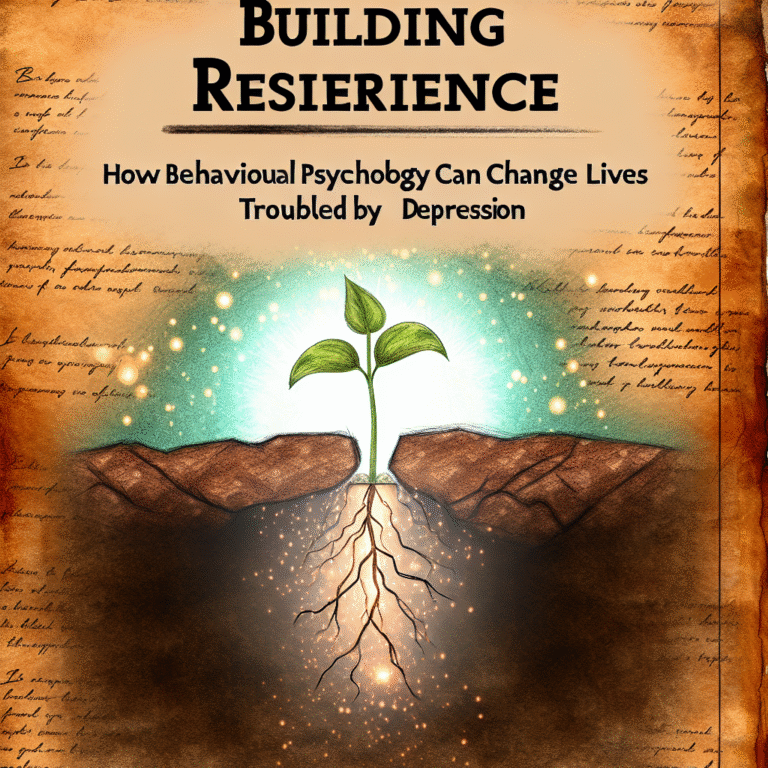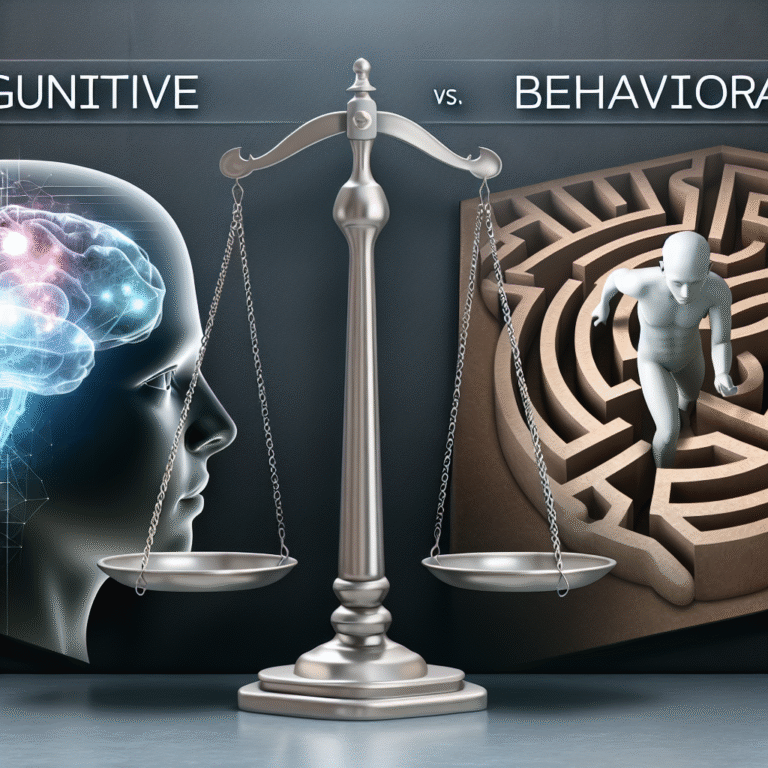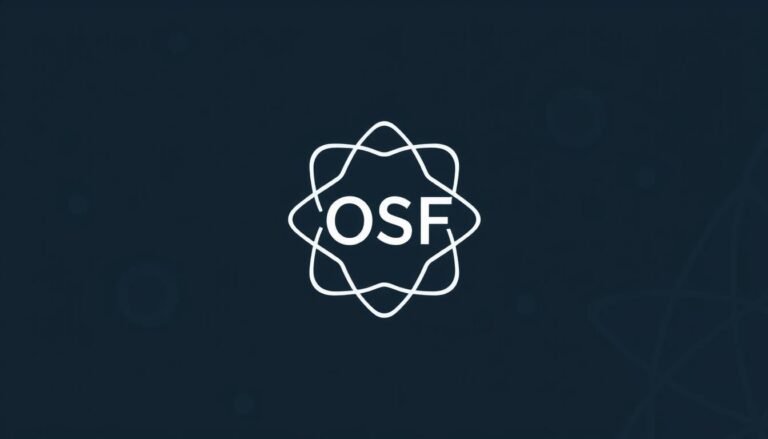
Harnessing Behavioral Psychology: Transforming Workplace Dynamics for Ultimate Success
Introduction
In today’s rapidly evolving business landscape, the way we understand and interact with each other defines not just individual success but also overall organizational health. One of the most powerful tools in this context is behavioral psychology. By harnessing behavioral psychology, companies can transform workplace dynamics, leading to heightened employee satisfaction, improved productivity, and a robust organizational culture. But how do we effectively utilize these principles to create positive changes?
This article will explore practical applications of behavioral psychology in the workplace. Through real-world examples, scientific backing, and strategic insights, we will uncover how Harnessing Behavioral Psychology: Transforming Workplace Dynamics isn’t just a lofty ideal—it’s a proven strategy for success.
Understanding Behavioral Psychology: A Brief Overview
Before we dive into the applications, let’s establish what behavioral psychology is. This branch of psychology focuses on understanding how the environment, social influences, and mental processes shape behaviors. Key concepts include:
- Behavioral Conditioning: How positive or negative reinforcement can alter behavior.
- Cognitive Biases: Systematic patterns of deviation from norm or rationality in judgment.
- Social Dynamics: The interactions and behaviors between individuals within a group.
Grasping these concepts is crucial for leaders and HR professionals aiming to cultivate an environment where employees thrive.
Case Study: Google’s Nudge Strategy
Google is renowned for its innovative approach, particularly when it comes to managing talent. One notable example of Harnessing Behavioral Psychology: Transforming Workplace Dynamics at Google involves their use of “nudges” to encourage healthier employee behaviors. For instance, their cafeteria design was strategically oriented to offer healthier food options more prominently. The result? A noticeable increase in the number of employees choosing nutritious meals, boosting their overall well-being and productivity.
Analysis
This case study showcases how simple adjustments informed by behavioral psychology can lead to monumental shifts in workplace dynamics, reinforcing the value of a healthy workplace.
Creating Positive Reinforcement Systems
Why Rewards Matter
Positive reinforcement is a core principle of behavioral psychology. When employees are rewarded for desired behaviors, it increases the likelihood that those behaviors will be repeated. Companies can leverage this to boost engagement and morale.
Implementing a Rewards System
- Identify Desired Behaviors: Define which behaviors you want to reinforce, such as teamwork, punctuality, or creativity.
- Choose Appropriate Rewards: Tailor the rewards (monetary bonuses, time-off, public recognition) to align with what motivates your employees.
- Monitor and Adjust: Continuously assess the effectiveness of the reward system and make adjustments as necessary.
Example: Salesforce’s Recognition Program
Salesforce has a robust employee recognition program, where peer-to-peer recognition translates into points that employees can redeem for prizes. This initiative has not only heightened employee morale but has also fostered a culture of mutual appreciation.
Analysis
By utilizing positive reinforcement derived from behavioral psychology, Salesforce enhances workplace dynamics—fostering an environment where employees feel valued and motivated to perform better.
Encouraging Open Communication
The Role of Psychological Safety
One crucial insight from behavioral psychology is the importance of psychological safety in fostering open communication. When employees feel safe to express themselves without fear of judgment or retaliation, collaboration flourishes.
Strategies to Enhance Communication
- Regular Feedback Loops: Establish routine check-ins to encourage open dialogue.
- Train Leaders in Active Listening: Equip managers with the skills to listen empathetically, making employees feel heard and valued.
Case Study: Buffer
Buffer, a social media management tool, emphasizes radical transparency and communication. They publish salaries openly, encouraging honest discussions around pay, which has significantly contributed to team trust and cohesion.
Analysis
Buffer’s approach exemplifies the principles of behavioral psychology, as their focus on open communication has transformed their workplace dynamics, making it one of the most desirable companies to work for.
Understanding and Overcoming Cognitive Biases
The Impact of Bias on Decision-Making
Cognitive biases can lead to poor decision-making, particularly in team dynamics. Leaders must understand these biases to mitigate their effects on workplace interactions.
Tackling Common Biases
- Confirmation Bias: Encourage diversity of thought in team discussions to counteract this bias.
- Anchoring Effect: Train teams to critically evaluate initial information and adjust their opinions accordingly.
Case Study: Amazon
Amazon employs a structured decision-making process that helps teams mitigate biases, leading to informed decisions based on data rather than assumptions. Their approach has led to innovative product launches and a customer-centric service ethos.
Analysis
By understanding and managing cognitive biases through tailored strategies, Amazon has demonstrated successful Harnessing Behavioral Psychology: Transforming Workplace Dynamics, leveraging better decision-making processes for organizational growth.
Building Resilience and Coping Mechanisms
The Need for Organizational Resilience
Workplaces inevitably face challenges, whether economic downturns or internal conflicts. Building resilience through behavioral psychology principles can equip teams to adapt to change more effectively.
Strategies for Promoting Resilience
- Training Programs: Offer workshops on stress management and coping skills.
- Flexible Work Practices: Encourage a balance between personal and professional lives, enabling employees to cope with pressures effectively.
Case Study: Zappos
Zappos’ investment in employee well-being and resilience training has enabled the company to maintain high morale, even during challenging times. Their employee engagement strategies have led to greater satisfaction and loyalty.
Analysis
Zappos ensures that Harnessing Behavioral Psychology: Transforming Workplace Dynamics is not just a theory, but a practice embedded in their culture, illustrating the importance of resilience in maintaining high-functioning teams.
Fostering Team Collaboration
The Social Dynamics of Teams
Behavioral psychology emphasizes the significance of social influences on individual behavior. Encouraging collaborative team dynamics can enhance cohesion and innovation.
Implementing Team-Building Activities
- Structured Team Exercises: Organize activities that require teamwork, such as problem-solving challenges.
- Cross-Department Collaboration: Foster interaction between different teams to enhance understanding and bolster creativity.
Case Study: IDEO
IDEO is known for its collaborative culture that relies on iterative brainstorming processes. Their approach relies heavily on the principles of behavioral psychology, and their star-studded design team’s success speaks for itself.
Analysis
Through Harnessing Behavioral Psychology: Transforming Workplace Dynamics, IDEO showcases the profound impact that effective team dynamics can have on innovation and problem-solving.
Leveraging Data to Drive Behavioral Change
The Role of Behavioral Analytics
Utilizing behavioral analytics allows organizations to gather data on employee performance and engagement. By analyzing this information, businesses can implement changes that lead to increased satisfaction and productivity.
Steps to Implement Behavioral Analytics
- Gather Employee Feedback: Utilize surveys and focus groups to understand employee sentiments.
- Analyze Data for Trends: Identify behavioral patterns that warrant interventions or adjustments.
- Implement Change and Monitor Impact: Apply insights to modify workplace practices and continuously evaluate the effects.
Case Study: Microsoft’s Productivity Insights
Microsoft has integrated behavioral analytics into its workforce strategy, resulting in insights that have driven policy changes—like flexible working hours—which earned employee satisfaction and improved productivity metrics.
Analysis
Microsoft exemplifies how Harnessing Behavioral Psychology: Transforming Workplace Dynamics through data not only enhances workplace culture but also advances overall performance.
Conclusion
Harnessing Behavioral Psychology: Transforming Workplace Dynamics is an ongoing journey for any organization aiming for sustainable success. Understanding and implementing these psychological principles can redefine workplace interactions, improve employee satisfaction, and ultimately lead to greater business outcomes.
By creating a nurturing environment that fosters open communication, encourages positive reinforcement, and fosters collaboration, organizations can inspire their teams to perform at their best. As leaders and professionals, it’s essential to recognize that the foundation of any successful organization is not merely its products or services but the people who bring them to life.
Actionable Insights
- Actively Listen: Make a conscious effort to understand employee needs and perceptions.
- Experiment with Nudges: Try small changes in the workplace environment to see what yields effective results.
- Embrace Data-Driven Decisions: Regularly leverage behavioral analytics for continuous improvement.
FAQs
1. What is the primary goal of harnessing behavioral psychology in the workplace?
The primary goal is to improve employee engagement, enhance productivity, and foster a positive organizational culture by understanding and influencing behaviors.
2. How can organizations implement behavioral psychology effectively?
Organizations can start by identifying specific behaviors they want to encourage, using positive reinforcement, and training leaders to better communicate and collaborate with their teams.
3. Are there any risks involved in using behavioral psychology techniques?
If misapplied, techniques could lead to manipulation rather than genuine motivation. It’s essential to prioritize ethical practices and transparency.
4. How long does it take to see results from implementing these strategies?
Results may vary, but organizations can typically see initial improvements within a few months, particularly in employee engagement and satisfaction.
5. What is the relationship between behavioral psychology and team collaboration?
Behavioral psychology emphasizes social influences; hence, by understanding these dynamics, organizations can foster better communication, trust, and teamwork among employees.
By diving into the depths of Harnessing Behavioral Psychology: Transforming Workplace Dynamics, organizations can unlock the potential of their teams, set the stage for innovation, and achieve exceptional results. The journey toward a thriving workplace depends on our willingness to understand ourselves and each other.
















